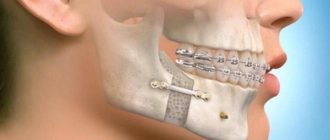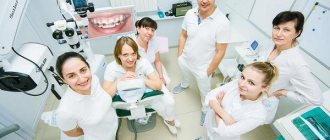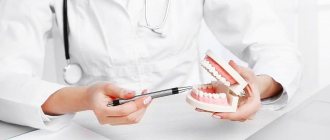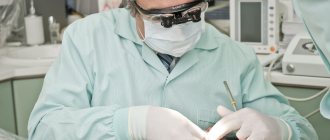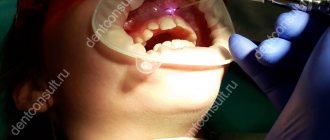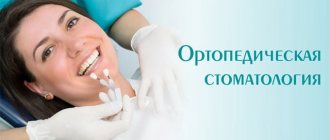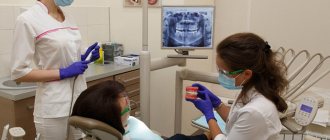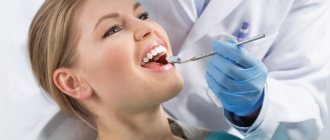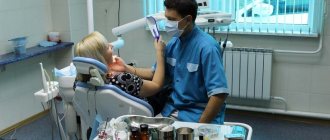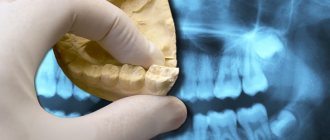Orthodontics is one of the most complex dental specialties. There is no clear understanding of the importance of correcting the bite in the context of comprehensive dental rehabilitation, even among doctors - what can we say about the unity of approaches, methods and opinions? Orthodontics is a mystery, especially for the older generation of dentists, because thirty to forty years ago no one thought about the influence of bite on the condition and health of the dental system.
And how many myths and misconceptions about orthodontic treatment circulate among patients! Here there are terms of five years, and caries under braces, and the fact that “it’s too late to correct something at 25 years old,” and much more...
Anna Sotnikova, an orthodontist at CLINIC IN, a specialist in bite correction and just a good person, like our entire team, believes that the more you know about orthodontics, the better for everyone.
Therefore, I decided to tell you, dear friends, what you need to know about correcting your bite even before you come to her for a consultation.
So, the first thing you need to know about bite:
Correct bite is the basis for a healthy dental system.
It is impossible to carry out full dental rehabilitation without correcting the bite in some way. In addition, the state of the bite, the nature of the closure of the teeth, load distribution, etc., are taken into account even in the treatment of caries, implantation, in periodontics, not to mention prosthetics. The condition of your bite is a feature of yours that is taken into account by the doctor when selecting a plan for individual oral hygiene and other preventive measures. Ignoring this fact leads to a huge number of problems and medical errors that sadly affect the results of treatment.
The second thing you need to know about bite:
A beautiful smile does not always mean a correct bite. And vice versa.
When we, doctors, talk about “correct bite,” we usually mean a position of the teeth in which they evenly and correctly distribute the chewing load. In other words, when correcting a bite, we primarily focus on function. Aesthetics, in fact, is a by-product of functional correction.
As aviators say: “An ugly plane doesn’t fly.” It’s the same with us orthodontists – a fully functional bite cannot but be beautiful.
Third, no less important:
Whatever the technique for changing the bite, it is based on the same, simple and understandable physiological mechanisms.
This means that all existing orthodontic methods have more or less similar effectiveness and treatment time. Of course, subject to the correct selection in a certain clinical situation. But we will tell you about this a little later.
And finally, fourth:
Bite is a dynamic thing and changes with age.
It is affected by literally everything: fillings, crowns, missing teeth, wisdom teeth, bad habits, etc. Yes, what can we say - even with the ideal condition of the teeth, their wear and tear will lead to changes over time. In this regard, the key point of orthodontics is to make age-related changes in the bite so insignificant that they do not lead to any complications or deterioration in the quality of life .
And for this you need to know the patterns of development of this or that dental pathology and its relationship with the state of the bite.
What does an orthodontist treat in children?
The list of orthodontic diseases, pathologies and anomalies is extensive. These are not only bite defects, but also many other deviations - congenital, hereditary, acquired. The most common problems people come to dentistry for are:
- teeth;
- dentofacial rows;
- bite
Pathologies and dental anomalies
When assessing individual units of a child’s jaws, a pediatric dentist or orthodontist will pay attention to the developmental features of each individual tooth:
- shape - classic or spiky, screwdriver-shaped, barrel-shaped, with deformations of the cutting edge line;
- dimensions - reduced or increased compared to neighboring units;
- tissue structure - normal teeth, underdeveloped condition, excess tissue volume;
- timing of appearance - according to the age of the child, early eruption or late;
- position in the jaw row - rotated, tooth growth from the side of the lip or from the side of the palate, excessive protrusion from the gums, growth in place of another tooth.
Also, the pediatric orthodontist will note the number of teeth in a row - edentulism or the presence of supernumerary teeth.
Almost all of the problems listed are solvable. Modern dental methods can quickly and painlessly change the positions of teeth, reverse pathologically located units, help quickly remove excess teeth and perform prosthetics in the absence.
Anomalies of the dentition
What does the pediatric orthodontist treat in this case? Problems of the dentition are more serious for dental health than single anomalies of growing units. Incorrect position of the jaws affects the quality of speech, creates difficulties in nutrition, and worsens the aesthetics of the face.
The most common problems relate to:
- The size of the jaw rows is excessive growth of one of the jaws compared to the second or a delay in development in both rows.
- The position of the jaw relative to the base of the skull is asymmetry, forward or backward displacement.
- Consistency and symmetry of the arrangement of teeth - poor contact when closing, crowding, rare position, large gaps between units.
Anomalies of bite, occlusion
Pathological bite is the most common problem among young patients. The orthodontist will successfully correct the bite
- distal - the upper dental row is highly developed and protrudes forward;
- mesial - excessive development of the lower jaw is observed;
- cross - when the teeth are closed, the upper dental row intersects with the lower one;
- deep - the upper incisors completely cover the lower ones;
- open - the teeth are only partially connected.
There are many pathologies, and the doctor’s task is to make the correct diagnosis and select the correct treatment.
Consequences of pathology
What malocclusion affects depends on the severity and type of deformity. Often pathology has a negative impact on other systems and organs, disrupting their normal functioning.
How does malocclusion affect health and what consequences does it cause:
- diseases of the digestive tract - deformation of the position of the jaws interferes with the quality of chewing food;
- premature wear of tooth enamel;
- high probability of breakage of dentures if they are present and the impossibility of placing them when indicated;
- early wear and tear of the temporomandibular joint and its weakening, which leads to jaw pain and headaches;
- premature appearance of wrinkles, deformation of the normal oval of the face;
- problems with diction, inability to produce intelligible speech.
Diagnosis of orthodontic diseases
It is important for a pediatric orthodontist to see a comprehensive picture - not only the current state of the oral cavity, but also the rudiments of future teeth and the structure of bone tissue. To do this, the dentist chooses several diagnostic methods:
- Orthopantomography (OPTG) is an x-ray of the bones of the facial skeleton when all the teeth are aligned in one line.
- Teleroentgenogram (TRG) is an x-ray of the jaw in the frontal and lateral projections of the skull.
- Casts are real-size simulations of the jaw to evaluate the position, shape and size of individual teeth.
- Photographing of the face and oral cavity to assess asymmetry, external deformations, and carry out calculations.
- Computed tomography (CT) is a three-dimensional image of the jaw in digital format.
- Video recording - recording abnormal manifestations of jaw function in dynamics.
Also, a pediatric orthodontist may refer the patient for a consultation with dentists or doctors of other specializations to obtain an additional professional opinion.
Pediatric dentistry: how an orthodontist treats
A pediatric orthodontist chooses a treatment method only after a complete examination of the patient. When making a decision, the doctor takes into account:
- child's age;
- type of bite - milk, permanent, replaceable;
- orthodontic pathology - anomalies of teeth, dentition, bite.
The most popular correction methods:
- myogymnastics (myotherapy) - a course of special exercises aimed at strengthening the muscles of the maxillofacial area;
- surgical method - necessary to eliminate pronounced deformations of the bite, jaw rows, dental sequences;
- hardware therapy - the use of fixed and removable structures to correct the bite or individual units.
Orthodontic devices for bite treatment
Orthodontic systems are created or customized to address a patient's specific problems. When installed on the teeth, the corrective system begins to put pressure on abnormally located areas, forcing:
- teeth move into the correct position;
- dental rows expand to anatomically correct sizes;
- muscles tighten, returning them activity and strength.
When choosing a device for treatment, an experienced orthodontist will take into account the absence of certain restrictions. Correction of anomalies is possible in the following cases:
- the teeth experience sufficient pressure to move into the desired position;
- the orthodontic apparatus is well fixed and supported;
- the dentofacial row is prepared - there is a place where the tooth that can be moved or rotated will fit;
- the tooth being moved has no obstacles to movement.
The main structures for correcting malocclusion used by an orthodontist:
- plates are mainly removable systems that help move teeth and expand the jaw to the desired size;
- trainers - silicone products for high-quality fixation of the position of the tongue and teeth, helping the teeth of the permanent bite to grow correctly and solving a number of other orthodontic problems;
- aligners are individually created aligners that are invisible on the teeth and can quickly move incorrectly positioned teeth to anatomically correct points;
- braces are non-removable orthodontic systems for high-quality correction of any malocclusion.
Rodikova Tatyana
Today, braces and aligners are competitors. Many parents ask for aligners for their children, since they are practically invisible on the teeth. Unfortunately, aligners do not cope with all malocclusions, but if possible, then, of course, I will agree with the patient’s wishes.
Description of structures used to correct bite
1. Aligners (or mouth guards). They are made from very durable materials.
Aligners have a number of advantages:
- the structure is removed;
- they are invisible to the eye, as they are made of transparent material;
- discomfort from the aligners is minimal;
- the devices do not require specialized care. You just need to maintain hygiene by rinsing the trays with water.
2. Trainers. These structures are manufactured in series. In this regard, these devices are available to almost all groups of the population. The devices themselves are worn only a few hours a day. The wearing time depends on the doctor's prescription. Trainers are used by orthodontists to correct minor bite deformities. The peculiarity of using the devices is that they allow you to straighten teeth that are located separately from each other.
3. Braces are brackets connected by a power arc. Braces are attached to the teeth, fixing the desired position. The braces correction method is universal, as it copes with many deviations. Period of wearing braces: from 2 months to 5 years. The period of straightening depends on how crooked the teeth were at the very beginning and how the body adapts to the changes made.
Indications for contacting an orthodontist
A visit to the orthodontist should be scheduled after the primary baby teeth appear—at 3-4 years of age. An early examination will help to identify pathology at the stage of formation of the dental system of a young patient, which will significantly facilitate and speed up treatment.
You should also schedule a mandatory visit to the orthodontist if you have:
- bad habits in a child - he will not part with the pacifier, constantly holds his thumb in his mouth, chews pencils and pens;
- mouth breathing - reluctance to breathe through the nose indicates orthodontic pathologies;
- obvious deviations in the development of the dentofacial apparatus - congenital or appearing as teeth grow or change;
- difficulties in swallowing, chewing;
- speech therapy problems, difficulties in pronouncing individual sounds;
- large interdental spaces;
- crowding.
Causes of deformation
Reasons for the development of malocclusion:
- genetic factor;
- in childhood - improper attachment to the breast, bad habits in the form of finger sucking, pacifiers, too early removal or loss of milk teeth;
- inappropriate jaw and teeth sizes, for example, teeth that are too large relative to the size of the jaw;
- facial injuries or chronic diseases that provoke respiratory dysfunction;
- strong pressure from the jaw muscles, as a result of which the lower jaw shifts forward;
- deficiency of hormones produced in the thyroid gland.
How to prepare your child for an orthodontic appointment
The initial appointment with an orthodontist takes place without any preparation. The child just needs to brush his teeth and eat beforehand. The latter is desirable, as it will help reduce salivation and facilitate the examination procedure. The child should also be told about the doctor’s specialization. In simple words, explain who this pediatric orthodontist is and what he treats.
An orthodontic examination is a painless procedure. It does not cause fear or discomfort in the baby, but it helps to identify deviations in the development of the dentition as early as possible.
Soldatenkova Alina
For fearful children, our clinic provides adaptation techniques. Such meetings help to get acquainted with the dental center and learn in a playful way about the work of dentists. The initial appointment can be combined with adaptation and an examination of the teeth and mouth can be carried out unnoticed by the child.
How much does orthognathic surgery cost in Krasnodar?
The cost of the operation includes the operation itself and the post-operative period.
Orthognathic surgery without a postoperative period costs about 200 thousand rubles. The postoperative period will cost about 100 thousand rubles.
Patients in most cases are satisfied with the surgical intervention. They note an improvement in their quality of life. But for some, the disadvantage of this type of operation is the high cost. Since this type of operation is a planned operation of moderate severity, it is possible to carry it out under compulsory medical insurance. The waiting period can be more than 6 months.

